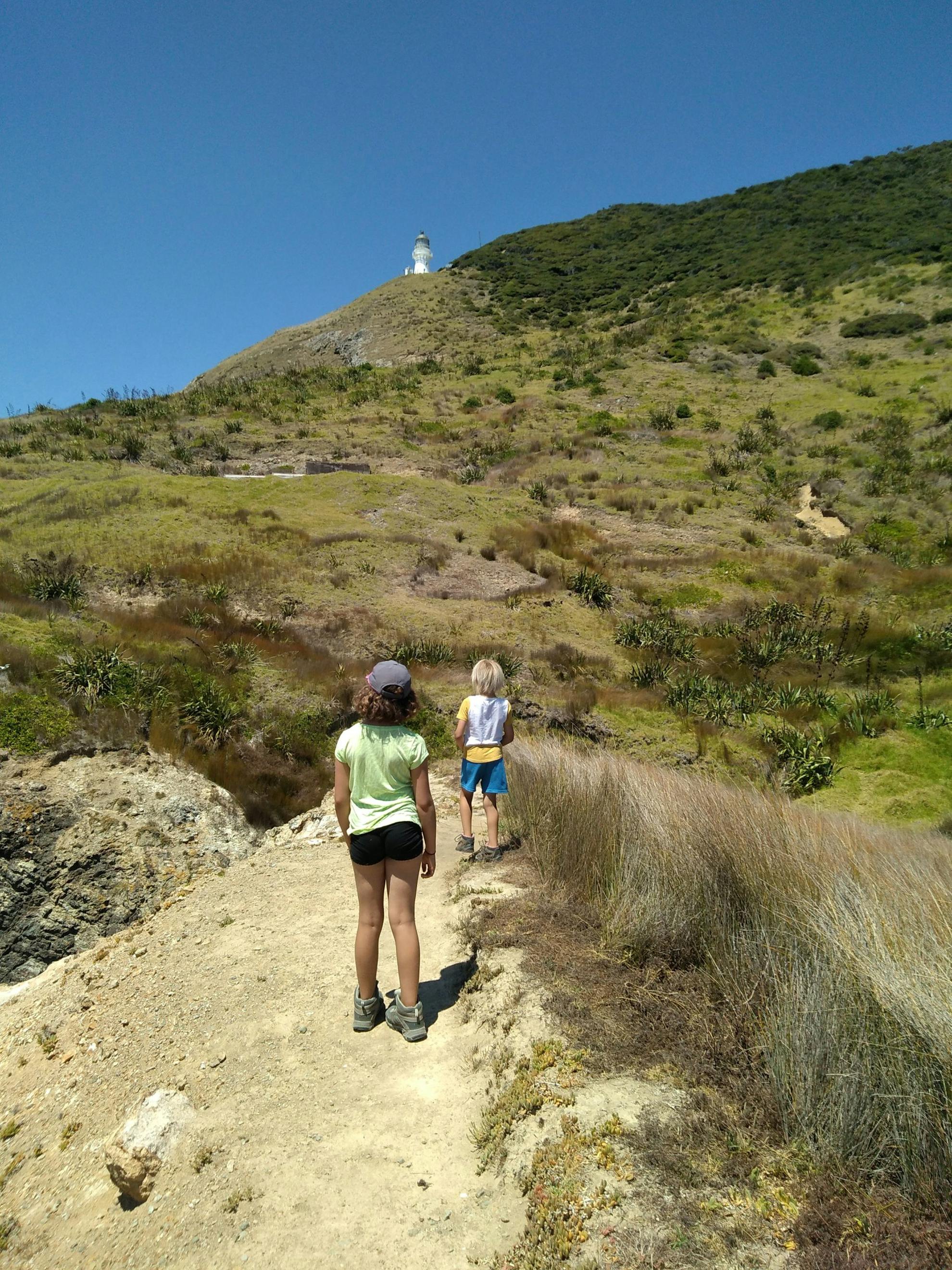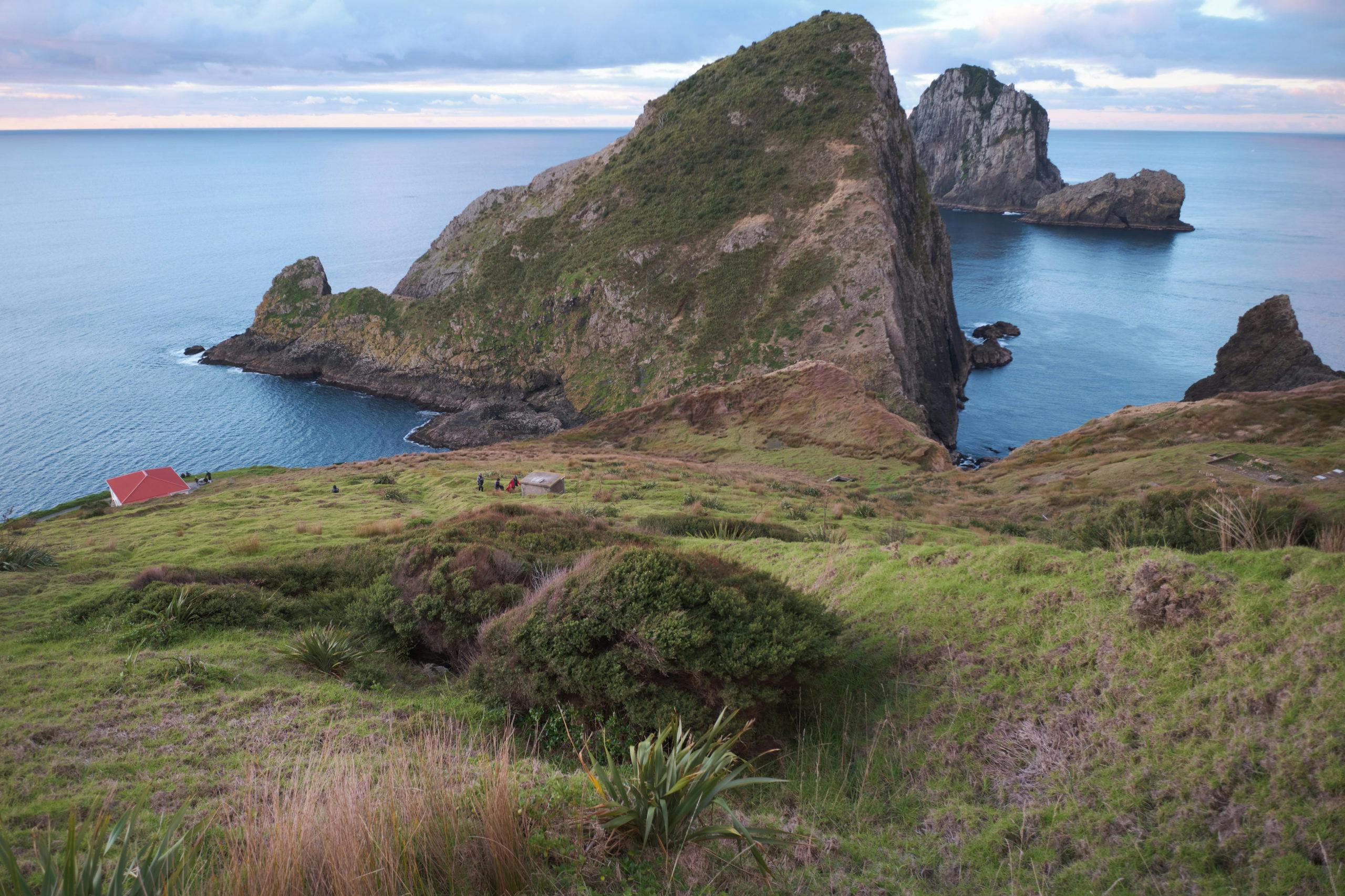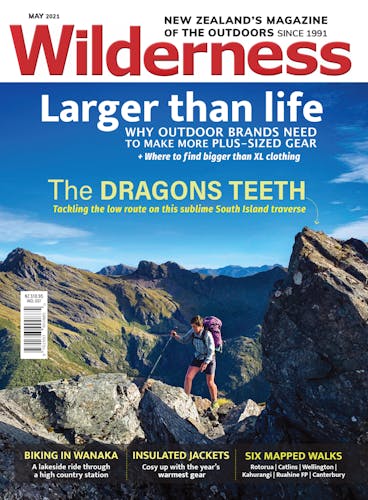A family tramp to Cape Brett Hut almost ends in a thirsty disaster when the water tanks are found empty, but the adventure was worth every moment, writes Polly Greeks.
“Cape Brett? You do realise that’s the second hardest walk in New Zealand?” Our dinner companion shuddered theatrically as he evoked a succession of never-ending hills.
I shot him a murderous glance. “We’ll be fine,” I soothed the children.
They’d both stopped eating to eye James and me with alarm.
We were scheduled to walk Northland’s Cape Brett track later that month. While nobody online backs the claim of its ‘second hardest’ status, the Department of Conservation warns it’s a difficult hike. ‘The difference in elevation makes the walk more challenging than most’ and advises the return distance of 32km requires moderate to superior levels of fitness.
Prior to booking, we’d asked Vita (9), and Zendo (6), if they could do it. Both assured us they could.
In preparation though, we commenced a training regime with bushwalks of increasing duration and steepness. “You’ll need mental fitness too,” we reminded the kids when they whined on hills.
We did the walk in late January. Although DOC warns of a water shortage at the hut during summer months, the Bay of Islands’ office assured me there was drinking water available, which was a relief as we were staying two nights to give the kids recovery time before hiking out.
DOC suggests it’s an eight-hour walk to the Cape but, because we were unsure of our family’s speed, we allowed extra time. We camped the preceding night at Rawhiti, on the local Marae lawn and set off the next day at dawn.
“Is it really the second hardest walk ever?” Vita asked as we stood at the start of the track. Across the bay, light was warming distant hilltops. Before us, a steep flight of stairs ascended into shadows.
“No way,” I told her firmly, dismissing doubts she could do this. Meanwhile, her overconfident brother needed convincing to slow down. Like an excited dog, he raced up the steps, then down again, then back to the top while we heaved on our packs. Vita had announced herself capable of carrying her sleeping bag, water and clothes; Zen was unencumbered.
“You’ll carry me on your shoulders if I’m tired, won’t you dad?” he asked as he bounced forward assuredly as James swayed up the path with his load.
The hills were endless. But the native bush formed a deliciously cool green tunnel and the view from steep ridges was down into empty turquoise bays. Cicadas clacked, tūī called and the children laughed and chattered as we collected kilometres under a cloudless sky.

We lunched by a signpost that said there were only 2.5-hours to go. From there, the terrain became steeper and drier as the Rakaumangamanga Peninsula led us out into the Pacific. Sea cliffs dropped dramatically on either side. The kids’ springing steps reduced to plods. We had to ration our water, savouring every mouthful as heat rippled off the clay track. Morale dipped as peaks soared but then we caught sight of a following party and requests for pit-stops were abandoned by children eager to reach the hut first and bag the top bunks.
“But where is it?” Vita demanded angrily when we descended from the highest peak and saw the Cape Brett lighthouse. More trudging followed, and then, just before the land and our patience ended, there was the red roof of the hut far below on the edge of an immense sweeping ocean.
There was no fresh water at the hut. A long drink was the first thing we’d all been anticipating but nothing came out from the taps. Anxiously we checked a line of water containers stacked along the kitchen bench, but they were all empty or held seawater. An outside sink was dry and access to a concrete water-tank was thwarted by a snapped-off ball valve.
Tired, hot, thirsty, we were 16km from freshwater with young children in tow.
“Didn’t you see the website telling you to bring your own water,” said an arriving woman from the other party who generously gave us a litre of her precious water. Divided by four, it didn’t go far.
It was Sunday and the DOC office was shut when I put through a call. There was, however, a hotline for reporting whale strandings and other emergencies. The person who answered recognised the gravity of our situation and before long, someone called us back to say water would be delivered via water-taxi the next morning although she couldn’t say how much. She apologised for DOC’s incorrect information.
It was an uncomfortable night. Cooking rice and lentils in seawater made them inedible. Zen sobbed drily in his bunk bed. We had headaches and thirsted as if our insides were shrivelled sponges.
“Maybe we should take the water taxi in the morning,” James said. “We might have to, if not enough water is delivered.”
But the children wouldn’t hear of shortcuts: they were walking out.
The water-taxi arrived at 9am with more than 60-litres of water. Once James ferried it up the cliff path and we’d all drunk our fill, I was able to appreciate the Cape’s stark beauty.
For much of the 1900s, three families serviced the now-disbanded lighthouse. Today, the houses, tiny school, jetty and an old naval post are ruins. The only sound was the breeze rippling through tussock grass, the gentle ocean rising and falling along rocky outcrops and an occasional cry from a gull. Winter storms must smash at the sheer cliffs – the highest wave ever recorded was 43m and thundered over the lighthouse keeper’s house – but, for us, the tranquil summer sea revealed glassy green depths. We found seams of quartz crystal gleaming in the rocks and, sadly, the remains of hundreds of dead seagulls and chicks in a large nesting colony.
Later, a DOC ranger said he believed they’d starved to death when their food source, krill, failed to materialise. He blamed commercial overfishing – the large, predatory fish who drive the krill to the sea’s surface aren’t there anymore. The rotting birds seemed like more evidence of Earth’s interwoven fibres undoing.
New walkers arrived, also advised incorrectly to expect water and grateful there was now some to share.
The sunset was a pot of apricot paint splashed across the sky. Gulls keened. The steep hills above us turned black. Later, the rising moon cast a silver path right to the horizon.
It was still dark when we stepped out the next morning. We reached the lighthouse as the sun rose out of the ocean. Dawn’s shadowed coolness gave way to a fierce oven heat as we retraced our steps over relentless peaks for the mainland.
“I hate hills,” Zen wept. “I only like them when they’re young.”
Goals are reached by tackling them step-by-step. It took us seven hours to hike out. We re-emerged as if from another world, seasoned by elements, challenges and the flavour of wilderness. Teamwork had strengthened connections. The kids’ capabilities had expanded and with them, our adventure horizons. It was worth every moment.







